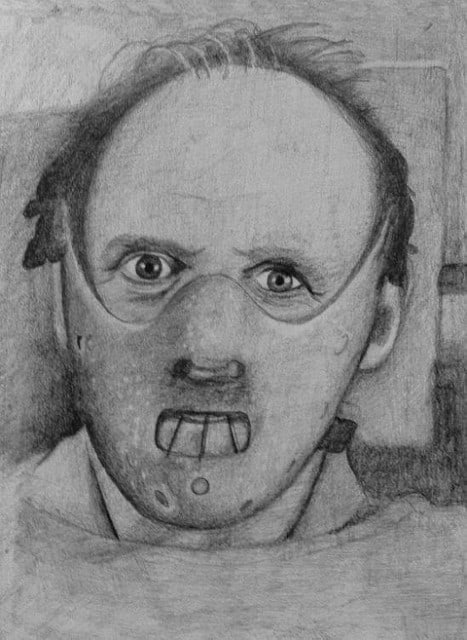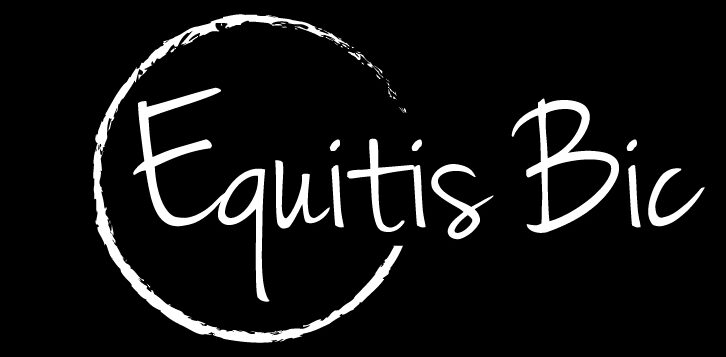Hannibal Lecter Nightmare

The Nightmare
My arms are crossed in front of me and fastened tight in a straight jacket. A muzzle’s lashed tight across my mouth. I’ve worn them both for so long that I’ve grown to hate the smell of leather. My arms are completely numb. I don’t let the detective across the table from me know that. I’ve got the upper hand here and I want to keep it that way. I’m in a scene straight out of Silence of the Lambs.
In the next scene things are switched around. This time I’m on the other side of the table and another detective is interrogating me, this time its a woman. She strikes an uncanny resemblance to Clarice Starling. I’m being questioned, always questioned. She’s describing a different murder now, asking me if I know who might have defiled the body in the pictures shes showing me. They’re desperate. They have no idea who is capable of such brutality now that I’m locked up. I toy with her, tease her, hinting that I know more than I do, then I wake up.
I’ve gotta be honest with you, when I was first told this nightmare I couldn’t see much meaning in it. I think what threw me off was the dreamer telling me her favorite movie was Silence of the Lambs and her favorite character of all time was Hannibal Lecter. To add to it, I also met her at Comicon and she was in character as, of course, Hannibal Lecter. Everything my eyes and ears were telling me was she watched Silence of the Lambs one too many times. After all, it makes sense that the sights and sounds of the movie were streaming through her mind and it just showed up in her dream life.
This is one of the most common assumptions that gets dreamers tripped up on understanding what they dream. I can’t tell you how many times I’ve been told — “Oh, the reason I had a dream about John is because I saw him just last week.” Or in this case, “I watch that movie all the time, it makes so much sense that I would have these nightmares.” This is perhaps one of the most, if not the most, popular misconceptions about nightmares. I bet you’ve said something like it, maybe even recently. But almost always this is not the case. Things are being brought to our attention for a reason. Although I couldn’t see it at first, there was a a very specific and very terrifying reason this dreamer was having this nightmare over and over.
One thing I’d like to say about this nightmare before we go any further is that, at first glance, this dream may not seem like much of a nightmare to you. The dreamer loves this movie and she loves this character, and it’s not dark like the first nightmare. I used to hold the opinion that if the nightmare didn’t appear to have dark surroundings, and there was nothing violent about to happen than it couldn’t be categorized as a nightmare. I didn’t categorize this fragment as a nightmare at first. Then, the strangest thing happened to me. As I was talking to the dreamer, I heard this little voice in my heart whisper to keep talking, there was something else here.
So I kept talking, asking questions about the nightmare, and out of nowhere the dreamer says “Yeah, that’s how my ex boyfriend tried to kill me.” We were nowhere near the subject, she just blurted it out. I was so shocked at what she said that I wanted to make sure I heard her right, so I asked her to repeat herself. “My ex tried to stab me to death when I was eighteen.” Her husband standing next to her confirmed what she said.
All of a sudden everything fell into place. It’s kind of hard to explain how this happens for me, this light bulb moment when the mystery of a nightmare becomes clear, but it is literally like a light bulb going off in my understanding.
The Interpretation
The interpretation of this nightmare is simply this: a deathly presence attached itself onto your life when you were eighteen and is trying to conform you into its deathly image.
Here’s how I arrived at the interpretation in that light bulb moment. In that time where I knew there was more here but I didn’t quite know what it was or how to find it, I just started asking questions. I asked a few questions about the specifics of her nightmare. How long had she had it? When did it start? Was it in color or black and white? I was searching for a starting point of the nightmare. Did it start in childhood, like the first nightmare we took a look at, or was it more recent?
When she said her Hannibal Lecter nightmare started just after the experience of her ex trying to stab her to death, the pieces started to fit together. To get there I had to first ask the question why would this nightmare start at that particular time? Why not a few years earlier or later? What was important about this specific time in her life? The answer lies in the dictionary definition of the word nightmare.
Night’mare, n. [ME. Nihtmare; niht, night, and mare, demon from AS. Mara, incubus, nightmare.]
1. Formerly, an evil spirit that was believed to haunt and suffocate sleeping people.
You’ve just read the archaic definition of the nightmare. This definition was widely believed until recently. Now, most people think that a nightmare is simply a scary dream, but as the above definition explains, there’s a lot more going on here than what the dreamer can detect with their natural senses.
Because the dreamer had such a traumatic experience and then pretty much right after that began having these nightmares, it’s obvious there’s a connection between the two, but not the connection one would expect. One might expect that this dreamer would begin having horrible nightmares about being attacked by someone with a knife, or being stabbed repeatedly, but that’s not what happened. Instead, she’d been put in the place of the killer, a killing genius that was being interrogated because of an expertise of bringing about death.
If we combine the dreamer’s real life experience with the nightmares she began having, we are given the answer. An evil spirit with the ability of inflicting torture and sleep suffocation on dreamers was now attempting to squeeze the life out of her by conforming her into the image of a killer, or in other words, fashioning her into an instrument of death.
This realization didn’t go over very well with the dreamer and she wanted her nightmares to stop. What I haven’t told you about this dreamer was that I also met her at the Denver Comicon and she had spent many hours of her time gathering together the items of her costume — her favorite movie character of all time, Hannibal Lecter! Not only was this spirit of death attempting to conformer her on the inside, but she’d already been conformed on the outside. She’d been drawn to portray a master mind serial killer by an outside influence she’d been unable to sense naturally. Her nightmare was showing her something that her physical eyes were unable to see by revealing it to her inner vision in her dream life. This is also why the dreamer classified this dream as a nightmare. No gruesome acts of brutality lead her to believe that this dream was a nightmare, but something inside, something very deep inside her picked up that she should be afraid of this dream experience, and she was right.
There are a couple of lessons in this example for all of us. The first is this. When you awake with a memory of a fragment of something you dreamed, don’t discard it because it’s not the telling of a full scene. Even fragments of scenes can communicate hidden dangers.
EB
Photo credit: moebius.arts via Foter.com / CC BY

One Response
interesting